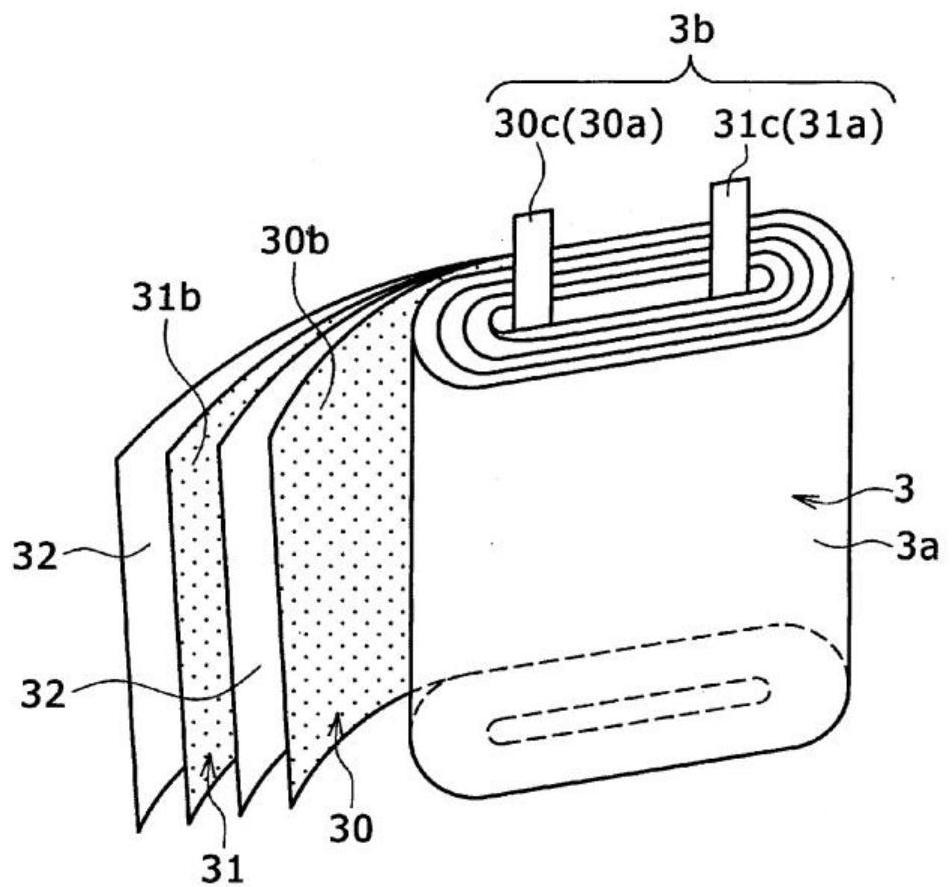Method for manufacturing nonaqueous electrolyte secondary battery and nonaqueous electrolyte secondary battery
A non-aqueous electrolyte and secondary battery technology, which is applied in the direction of non-aqueous electrolyte storage battery, secondary battery manufacturing, non-aqueous electrolyte, etc., and can solve problems such as cracks in the positive electrode composite material layer
- Summary
- Abstract
- Description
- Claims
- Application Information
AI Technical Summary
Problems solved by technology
Method used
Image
Examples
Embodiment 1
[0054] Li as the positive active material 1.054 Ni 0.199 co 0.597 mn 0.199 Zr 0.005 o 2, 5% by mass of carbon black relative to the positive electrode active material, and 2% by mass of polyvinylidene fluoride (PVdF) relative to the positive electrode active material were mixed, and N-methyl-2-pyrrolidone (NMP) was added , and stirred using a mixer (manufactured by PRIMIX Corporation, T.K.T.K.HIVIS MIX) to prepare a positive electrode composite material slurry. This slurry was coated on an aluminum foil having a thickness of 15 μm as a positive electrode core, dried, and compressed with a roll. In this way, a positive electrode plate having a thickness of 140 μm in which positive electrode composite material layers were formed on both surfaces of the positive electrode core was produced.
[0055] Graphite covered with low-crystalline carbon as the negative electrode active material, styrene butadiene rubber (SBR) that is 1% by mass relative to the negative electrode acti...
Embodiment 2~3
[0061] For Example 2 and Example 3, the amount of the binding material contained in the positive electrode composite material slurry is changed to be 3% by mass relative to the positive electrode active material and 4% by mass relative to the positive electrode active material, thereby adjusting the positive electrode Except for the hardness of the composite material layer, the positive electrode winding test and the evaluation of the wound electrode body were performed in the same manner as in Example 1. The softness indices of Example 2 and Example 3 based on the positive electrode winding test were 17 and 15, respectively.
PUM
| Property | Measurement | Unit |
|---|---|---|
| density | aaaaa | aaaaa |
| thickness | aaaaa | aaaaa |
| thickness | aaaaa | aaaaa |
Abstract
Description
Claims
Application Information
 Login to View More
Login to View More - R&D
- Intellectual Property
- Life Sciences
- Materials
- Tech Scout
- Unparalleled Data Quality
- Higher Quality Content
- 60% Fewer Hallucinations
Browse by: Latest US Patents, China's latest patents, Technical Efficacy Thesaurus, Application Domain, Technology Topic, Popular Technical Reports.
© 2025 PatSnap. All rights reserved.Legal|Privacy policy|Modern Slavery Act Transparency Statement|Sitemap|About US| Contact US: help@patsnap.com



